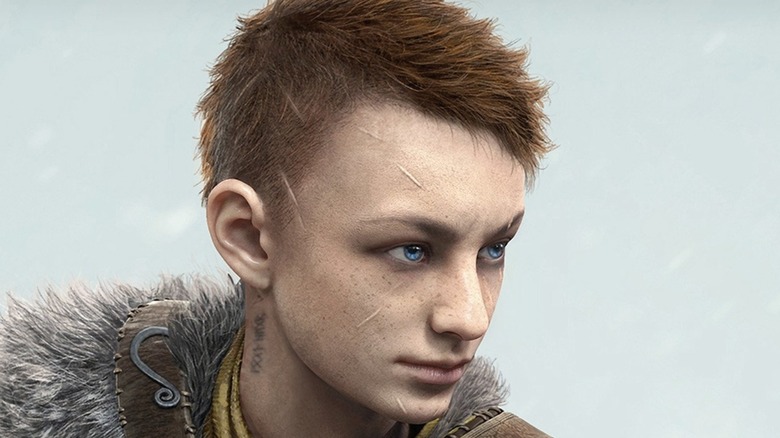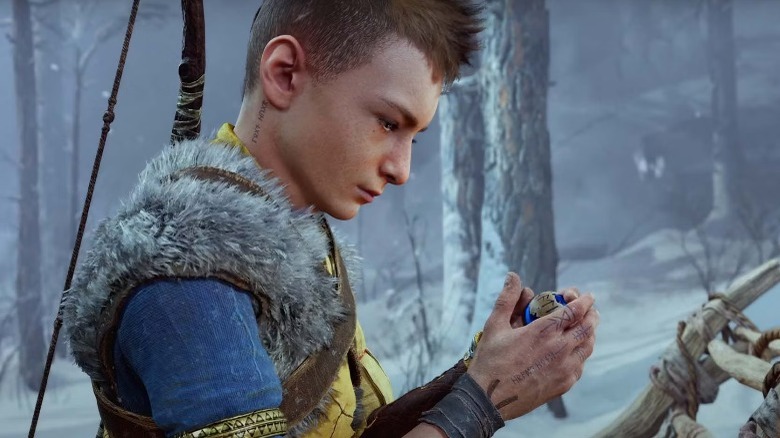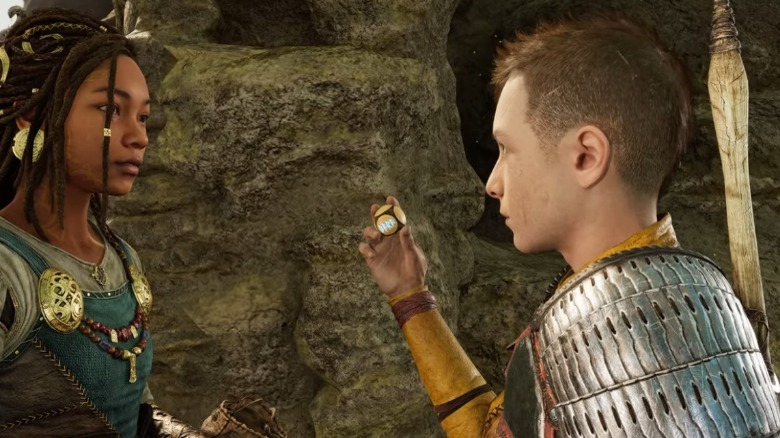God Of War Ragnarok: Atreus' Blue Orb Explained
Santa Monica Studios expanded the world of the "God of War” franchise significantly when it released the 2018 reboot, which leaves the isles of ancient Greece behind and delves into the world of Norse mythology. "God of War Ragnarok" expands on the story established by its predecessor even further, giving players more realms to explore, more enemies to fight, with more mysteries to solve. Critics have praised the game's beautiful story, arguing that the development given to many of the characters on the screen has made them surprisingly sympathetic. There is also a fair amount of nuance to this mythological saga.
One of the things that many people have been curious about since the trailer for "Ragnarok" first dropped is the curious, rune-covered blue orb that Atreus is carrying. There was a long shot of Atreus examining the orb with a reverence that seemed to indicate that it would be an object of great importance. After all, the "God of War" franchise is full of seemingly benign objects that turn out to be incredibly powerful. Now that the game is finally here, fans have finally been able to uncover the origins of this fancy marble. Fair warning though: The orb is central in several pivotal plot points in the game, and it's impossible to explain without major spoilers.
Uncovering the mystery of the orbs
Fans who wish to learn more about the blue orb will start getting hints early in the game. The first cutscene in "Ragnarok" features the moment from the trailer. Kratos is fastening a deer to the dog sled (or wolf sled in this case), and Atreus turns away from his father to pull the orb from a satchel at his waist, so he can examine it, turning back to ensure that his father isn't watching. When Kratos finishes with the deer, Atreus quickly stuffs the orb back into his satchel, seemingly trying to keep it hidden.
The two eventually receive a visit from Thor and Odin. At this point, Atreus will reveal to his father that he has been exploring the Giant's shrines in secret. He will then take Kratos to one of the shrines, uncover a secret passage behind it, and then show him the orb, claiming to have found it in another of the Giant's shrines. Mimir immediately recognizes it as being Giant craftsmanship, though neither he nor Atreus knows what the orb does. They then decide to embark on a journey to free Týr, learn about the changes that Atreus is experiencing, and discover the mystery of this strange orb.
Later, after they succeed in freeing the old Norse God of War, Atreus will find a second orb behind another of the Giants' shrines, but no answers about what they are or what they do.
The orbs contain the souls of giants
After yet another argument with Kratos, Atreus falls asleep clutching the orb and receives visions of himself as a child before meeting the mysterious Angrbođa. She gives him a bag of marbles, just like the ones Atreus has found within the shrines, which she explains contain the souls of the Giants of Jötunheim. She also seemed to express both surprise and relief to discover that there were more of them out there and that Atreus had already recovered some of them. This is a very important discovery since it means that all of the Giants weren't actually wiped out the way Kratos and Atreus had previously believed. Not only that, but these marbles can be used to resurrect them, and Atreus has the power to do it. To test this out, he and Angrbođa use one of the souls to resurrect a massive serpent, who she explains had its soul removed.
This ability is pivotal to the events in "Ragnarok," as it is mentioned in the prophecy that Týr will lead the Giants of Jötunheim against Odin and the Aesir gods, and it is likely to continue to be important in any future "God of War" titles that Santa Monica Studios might develop.



